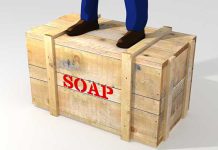Streams like Dry Creek, that experience high flows in the winter, are always moving gravel downstream. A hole dug in times of low flows will be filled back up by the winter’s high flows. This gravel normally comes from upstream tributaries, but in Dry Creek’s case, with the Warm Springs Dam blocking the majority of that gravel flow, the stream bed itself supplies the gravel. As the stream bed is lowered, the bank’s protective cover of tree roots is undermined and the bank, trees and all, collapses, contributing sediment and gravel to this natural conveyor belt.
The first bank robbery was stopped by the courts in the 1970s. A group of landowners upstream of a gravel plant at the West side bridge successfully sued to stop the mining of gravel in Dry Creek. They blamed the loss of their farmland on the instream extraction of gravel, and the court agreed.
The second bank robbery was the result of the Sonoma County Water Agency’s biological opinion that high flows in Dry Creek were negatively impacting the young salmon and steelhead in the stream. They proposed constructing slow water features that would provide refuge for the young fish. To do this, they cut channels through the long gravel bars that are part of the stream bed.
This construction took place through the teens, affecting seven of the fourteen miles of Dry Creek. It involved the removal of hundreds of thousands of yards of gravel. Some of this gravel was used to improve the participating landowners’ roads, but the majority went to the local gravel plant. The channels cut through these gravel bars are subject to the forces of high flows and have filled back up with gravel.
The third bank robbery was voted on by the Board of Supervisors – Water Agency this last July when it approved a proposal to re-excavate the sites below the Aesthete Winery site at the cost of up to $950,000. This work is in the process now with over 120 12-ton loads being hauled to the gravel plant south of Healdsburg. Upstream of this we can expect the streambed, gravel bars and banks to once again contribute gravel to fill these excavations.
The streambed degradation is evident at Yoakim Bridge as the gravel around the instream pier has been scoured away, resulting in a partial void under the pier footing. This is a serious threat to the bridge as the pier can no longer resist the lateral loads the winter flows and accumulated tree trunks exert on it.The Water Agency’s doubling down on a failed stream plan and neglect of the bridge has to be questioned. I regret that I waited 10 years to write this, but hope this letter starts a dialogue.
Paul Bernier and his wife, Yael, own and operate Bernier Farms in the Dry Creek Valley, in operation since the 1970s. bernierfarms.com









